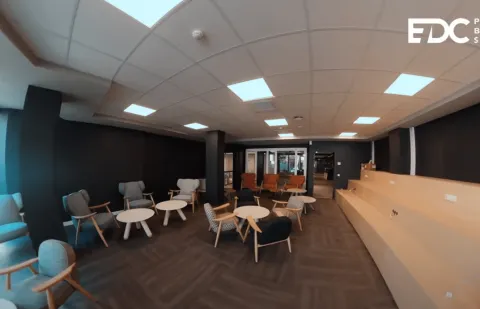
Workplace flexibility: a key concept in HR management
Flexibility at work is a managerial practice that values employees' needs, but requires an in-depth transformation of management and planning. It can be the key to a company's success, as long as it addresses employees' real concerns. Would you like to support change management?
Benefits of implementing workplace flexibility
One of the most obvious benefits of flexibility in the workplace is that it improves employees' work-life balance. Flexible working hours enable them to adjust their working hours to suit their personal and family commitments. This adaptability leads to a better life balance, which reduces stress and increases overall satisfaction. An employee who can, for example, start his or her working day earlier or later to fit in with personal constraints (taking the children to school in the morning, sporting activity at the end of the day...), will feel more in control of his or her life.
Flexibility at work also makes for greater efficiency, as it enables employees to work during the hours when they feel most energetic and focused. Whether early in the morning or late at night, adapting work to their natural rhythms can lead to a significant increase in productivity.
Offering flexibility can help companies attract and retain talented employees. Flexible work options are often valued by candidates, particularly by younger generations looking for a healthier work-life balance.
Flexibility in the workplace can also reduce costs for companies. Telecommuting, for example, can reduce the need for office space and the associated costs. What's more, satisfied and healthy employees are likely to reduce the costs associated with absenteeism and staff turnover.
Other practices to stimulate flexible working
Practice 1: Teleworking
Telecommuting has become a common practice, particularly since the COVID-19 pandemic. Encouraging work from home or alternative locations can not only offer employees greater flexibility, but also reduce operational costs for the company. Technological tools such as videoconferencing, instant messaging and online collaboration platforms facilitate this transition.
Practice 2: Flexible leave
Revising leave policies to make them more flexible is another effective practice. This can include options such as unplanned leave, sabbaticals, or the possibility of buying or selling days off. Such flexibility in leave management can contribute to a better work-life balance for employees.
Practice 3: Job Sharing
Job sharing and part-time work options are effective solutions for employees who can't or don't want to work full-time. These arrangements allow two or more employees to share the responsibilities of a single full-time position, offering greater flexibility.
Practice 4: Modular workspaces
Creating modular, collaborative workspaces can also encourage flexibility. Coworking spaces, breakout areas and flexible meeting rooms can foster a more dynamic and adaptable working environment.
Practice 5: Training
Offering training and professional development opportunities helps to adapt human resources to business needs. This can include online training, webinars, or self-study programs that allow employees to learn at their own pace.
The digital ecosystem supports its development
Communication and collaboration platforms such as Slack, Microsoft Teams or Zoom have transformed the way teams interact and collaborate. These tools enable employees to work together in real time, regardless of their geographical location, facilitating telecommuting and flexible working hours.
Digital project management tools, such as Trello, Asana or Jira, help teams to organize and track the progress of tasks efficiently. These platforms provide clear visibility of projects in progress and enable more agile and adaptable work management.
Cloud computing, with services such as Google Drive, Dropbox, or OneDrive, enables easy and secure access to documents and files, regardless of the employee's location. This flexibility in data access is essential to enable flexible and efficient working.
Artificial intelligence and process automation can take over repetitive tasks, freeing up employees to focus on more strategic and creative activities. This allows greater flexibility in task allocation and working time management.
Tips for creating your HR strategy for workplace flexibility
In today's business environment, where flexibility is increasingly valued, it is essential for human resources (HR) departments to develop effective strategies for integrating this flexibility into the heart of corporate culture.
The first step is to assess employees' needs and expectations in terms of flexibility, while taking into account the company's objectives and constraints. Surveys and focus groups can be used to gather valuable feedback.
It's important to define clear policies for flexible working. This includes flexible working hours, telecommuting, job sharing and flexible vacations. These policies must be clearly communicated to all employees to ensure uniform understanding and adherence.
To support flexibility, HR must ensure that the company has the necessary technological tools. This includes online communication solutions, project management platforms, and performance monitoring systems adapted to flexible working.
Setting up mechanisms to monitor and evaluate the impact of flexibility policies is essential. This includes analyzing productivity, employee satisfaction and work-life balance. These data enable strategies to be adjusted over time.

